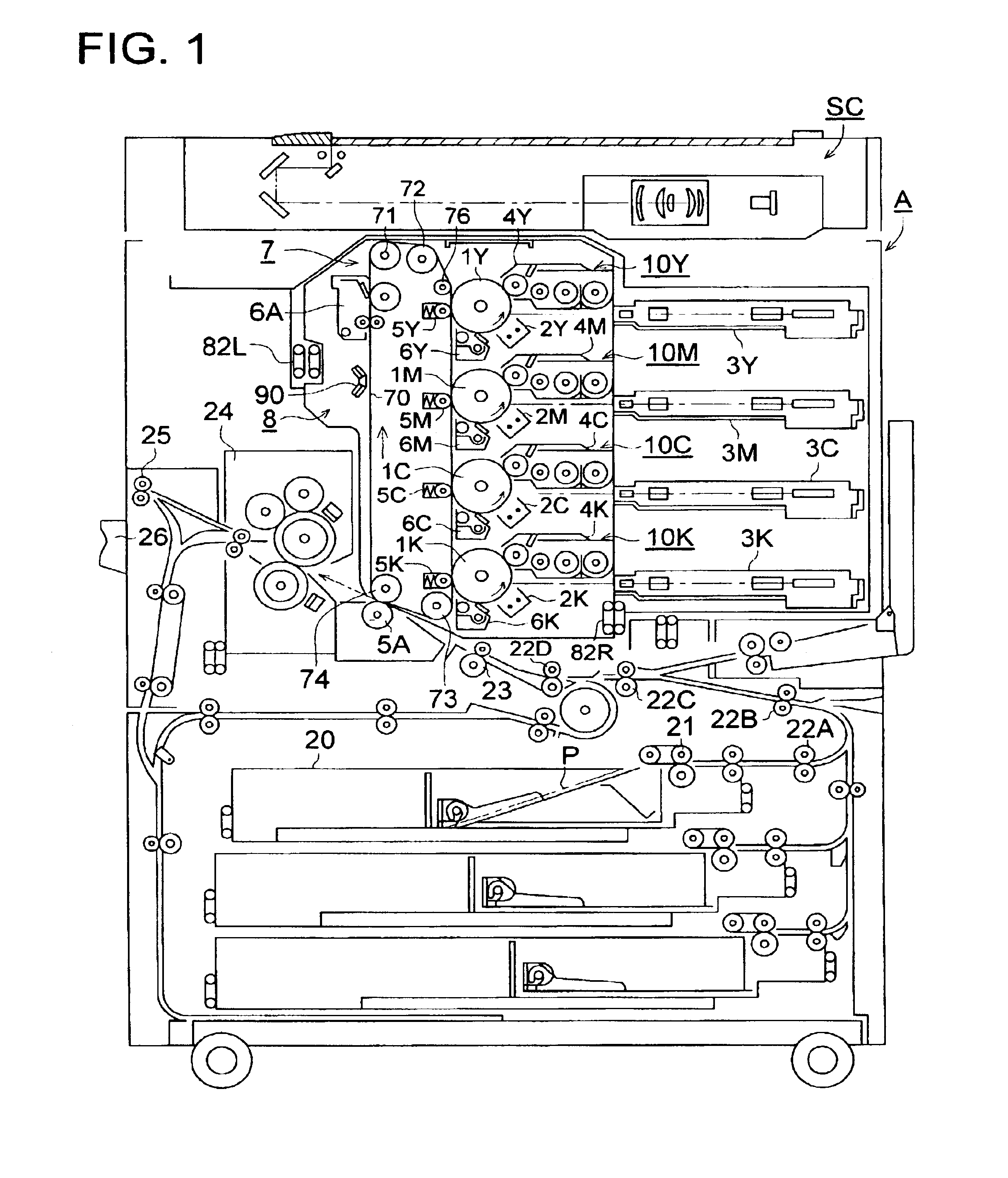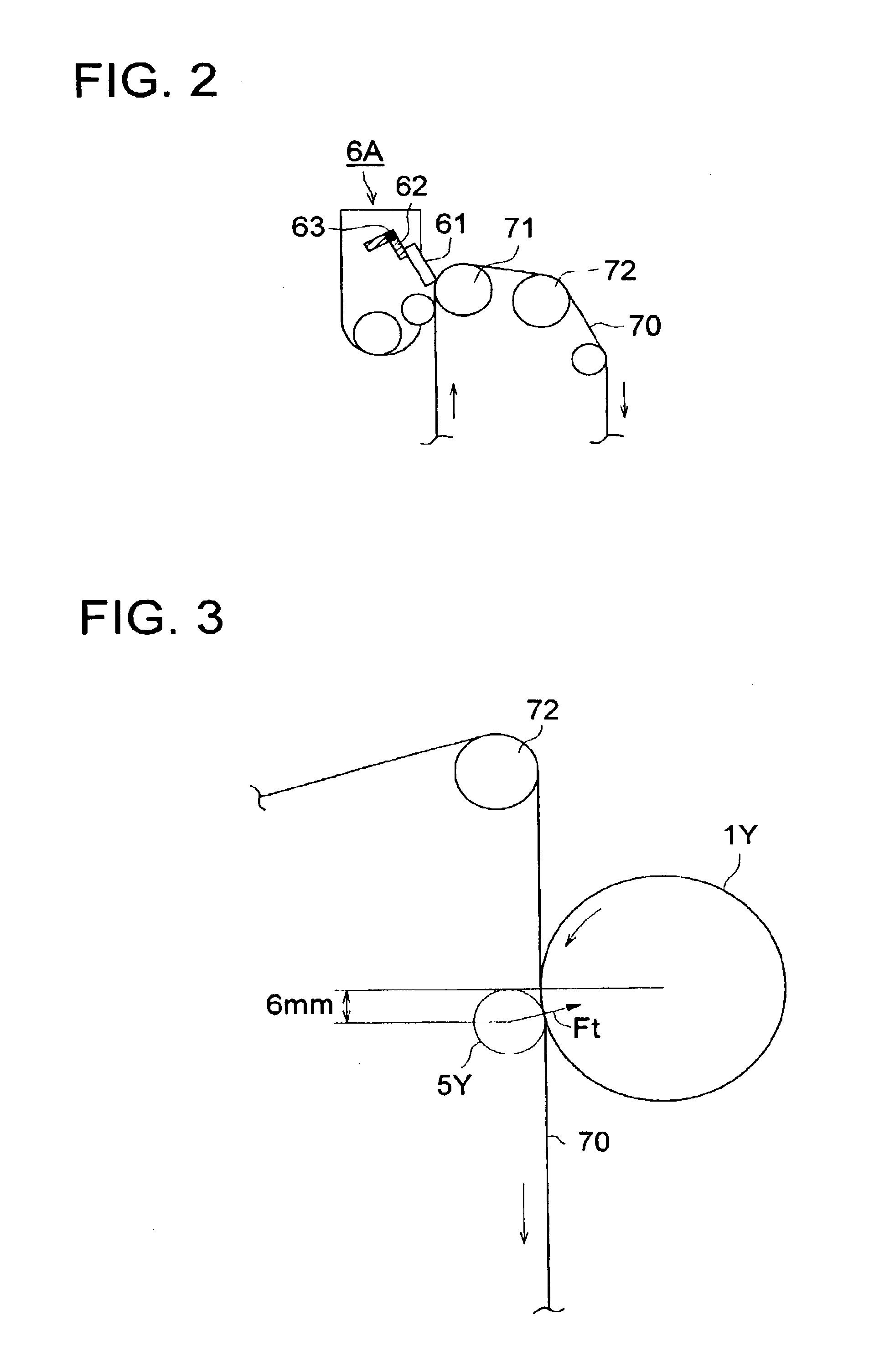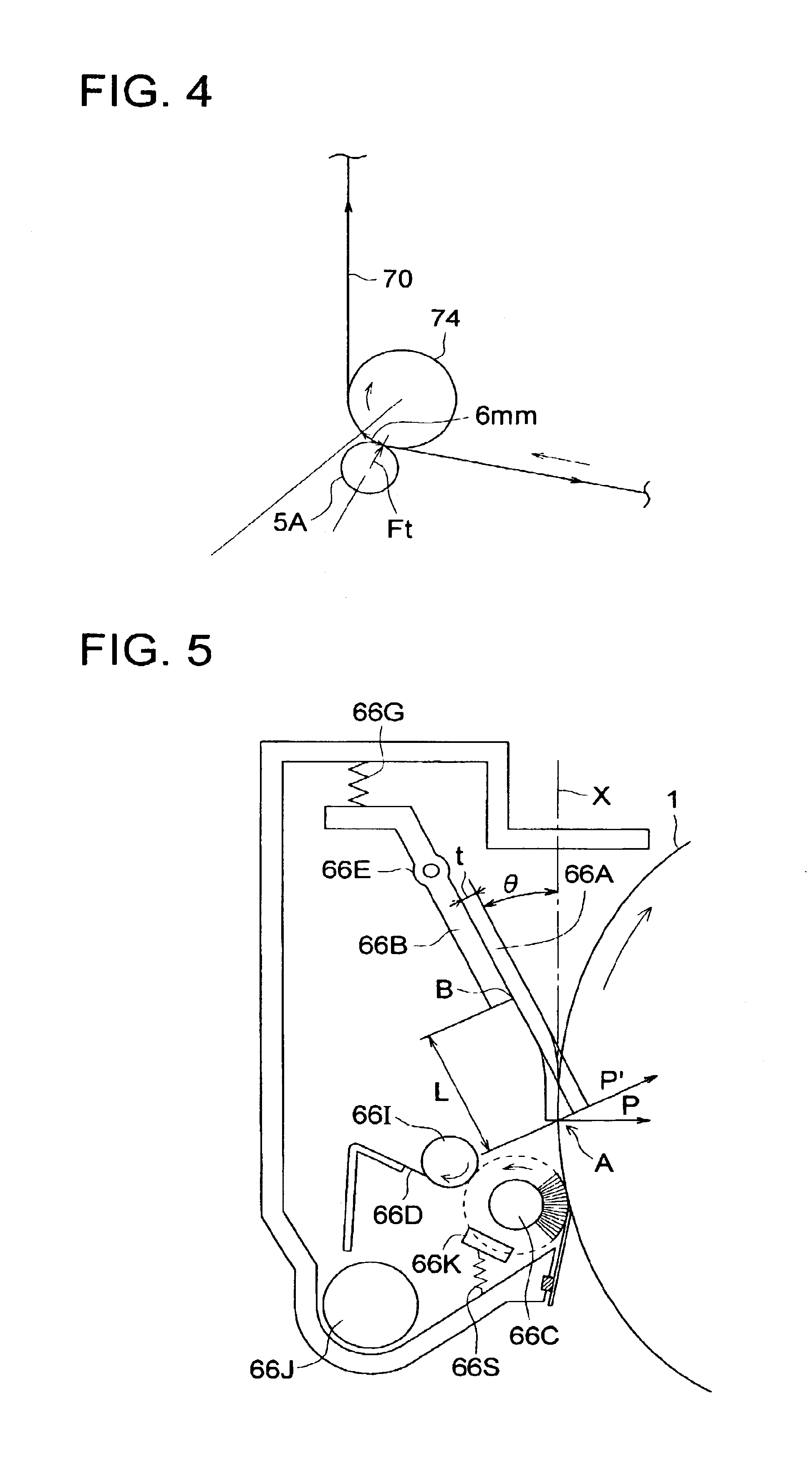Image forming method and image forming apparatus
a technology of image forming and forming method, which is applied in the direction of electrographic process apparatus, instruments, optics, etc., can solve the problems of image defects, decrease of transfer property, and hollow characters, and achieve the effect of improving the transfer property of toner
- Summary
- Abstract
- Description
- Claims
- Application Information
AI Technical Summary
Benefits of technology
Problems solved by technology
Method used
Image
Examples
example 1
Preparation of a Photoreceptor
Preparation of Photoreceptor 1
[0241]The following dispersion was prepared and coated on a cylindrical aluminum base element being manufactured by drawing, of which surface having been adjusted through a cutting process to have a ten-point surface roughness of 1.5 μm, to form a electric conductive layer having a dry layer thickness of 15 μm.
[0242]
Photoconductive layer (PCL) composition solution:Phenol resin160 partsPhotoconductive titanium oxide pigment200 partsMethyl cellosolve100 parts
[0243]The following under-coating layer composition solution was prepared. This coating composition was coated on the above-described photoconductive layer by means of an immersion coating method to form an under coating layer having a layer thickness of 1.0 μm.
[0244]
Under coating layer (UCL) composition solution:Polyamide resin (Amilan ® CM-8000: manufactured by 60 partsToray Corp.)Methanol1600 parts 1-butanol400 parts
[0245]The following coating composition solution was ...
example 2
[0336]Toners of 6 kinds 1Y, 1M, 1C, 17Y, 17M and 17C shown in Table 5 having a similar shape coefficient to toner 1Bk and toner 17 Bk were prepared in a similar manner to the preparation of a toner used in Example 1, except that C.I. Pigment yellow 185 (Y toner), C.I. Pigment red 122 (M toner) and C. I. Pigment blue 15:3 (C toner) were utilized instead of Regal 330R (carbon black manufactured by Cabot Co.) in a colorant dispersion solution.
[0337]
TABLE 5Ratio of tonerA variationRatio ofNumber averageparticlescoefficient oftonerparticleNumberhaving a shapea shape factorparticlesdiameter ofvariationfactor of fromof tonerwithouttonercoefficientToner1.2 to 1.6particlescornersparticlesof tonerM(m1 + m2)No.(%)(%)(%)(μm)particles(%) 1Y68.114.8865.625.581.5 2M68.214.5885.624.880.5 3C67.814.9875.624.582.017Y62.118.1435.728.265.617M62.318.3455.728.365.417C62.218.2445.728.665.3
Production of Developer
[0338]Each 10 weight parts of 1Y, 1M, 1C, 17Y, 17M and 17C and 100 weight parts of a 45 μm ferri...
PUM
| Property | Measurement | Unit |
|---|---|---|
| Fraction | aaaaa | aaaaa |
| Fraction | aaaaa | aaaaa |
| Percent by mass | aaaaa | aaaaa |
Abstract
Description
Claims
Application Information
 Login to View More
Login to View More - R&D
- Intellectual Property
- Life Sciences
- Materials
- Tech Scout
- Unparalleled Data Quality
- Higher Quality Content
- 60% Fewer Hallucinations
Browse by: Latest US Patents, China's latest patents, Technical Efficacy Thesaurus, Application Domain, Technology Topic, Popular Technical Reports.
© 2025 PatSnap. All rights reserved.Legal|Privacy policy|Modern Slavery Act Transparency Statement|Sitemap|About US| Contact US: help@patsnap.com



